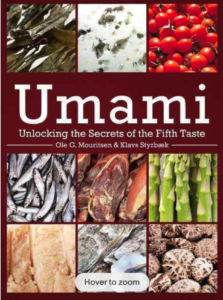Umami might already be on your radar, but do you *actually* know what it is?
Well in this blog, I thought I’d shed some light on what is umami? And why you need to add it to your meals.
To kick things off, we’re going back to school- culinary school to be precise, to explore more about taste. Taste comprises the sensory inputs of sweet, sour, bitter, salty and the fifth taste, umami. Side note, just for the record, flavour is not taste. Flavour is the totality of the sensory experience in relation to food and eating that includes taste.
Here’s the taste star for reference:
Fun fact for you- you know how we were all taught that taste has certain sections on our tongue, well that’s since been debunked- turns out we have all sorts of different taste receptors scattered all over our tongue, mouth, oesophagus, stomach and gut!
It’s interesting to note too, that most of our sense of taste comes from our sense of smell. Often when people think they’ve lost their sense of taste, but they’ve often just lost their sense of smell!
I digress, back to umami. The interesting thing about umami, is that it’s a relatively new member of the taste department (from a Western perspective anyhow). We won’t go into great detail; here’s an awesome NPR poddy and stunning BBC article on why it took so long for umami to be globally accepted as a taste.
The history in short; a Japanese chemist named Dr. Kikunae Ikeda set out to solve the question of what made the taste of the soup stock dashi distinct from other tastes like salty, sweet, sour and bitter? He essentially discovered a single compound from the stocks’ seaweed – glutamate. It’s the taste of glutamate, an amino acid (a building block of protein), that he named umami and he wrote a paper on it in 1909 in Japan. It took about 100 years to be recognised in the West.
So yes, umami is the result of flavour compounds called glutamates. Think of it as the ‘meaty, ‘savoury’ elements of food. Umami is naturally high in so many foods you probably eat on the reg; roasted tomatoes, mushrooms, fish, cured meat, parmesan cheese, seaweed, MSG, yeast enhancers, soy sauce and Vegemite. There are even some cool ways to enhance flavour with umami- it’s called synergistic umami where you pair different compounds that boost the umami effect eg: ham and cheese sandwich (in the Western context). Turns out umami can also help with our sense of smell (which we now know contributes heavily to how we perceive taste and flavour too)!
Something else to add to the paradox of umami is that it tastes better 40,000 feet in the air. Ever heard of people drinking Bloody Mary’s on a plane but never on solid ground? Well, it actually has to do with sound. Sound can suppress taste. In an aeroplane the engine noise suppresses our ability to taste sweet and salt but somehow enhances umami! Turns out airline catering companies have to add 20-30% more sugar and salt to main meals because of the taste suppressing effects of sound!
It’s all incredibly fascinating stuff and if you want a deeper dive into the world of umami, this book is the holy grail:
Mouritsen. (2014). Umami : unlocking the secrets of the fifth taste (Styrbæk, J. D. Mouritsen, & M. Johansen, Eds.). Columbia University Press.
So, for all you culinary curious out there (which I assume is almost all of you), it’s time to seriously consider dialling up your umami factor in the kitchen please and thank you. Lucky for you, Alg Seaweed is your umami bestie in the kitchen, and we’ve got load of recipes on the website to help. So what are you waiting for- let’s get cookin’!
So you feel like you’ve figured out what is umami? And why you need to add it to your meals? I hope so!



